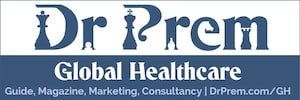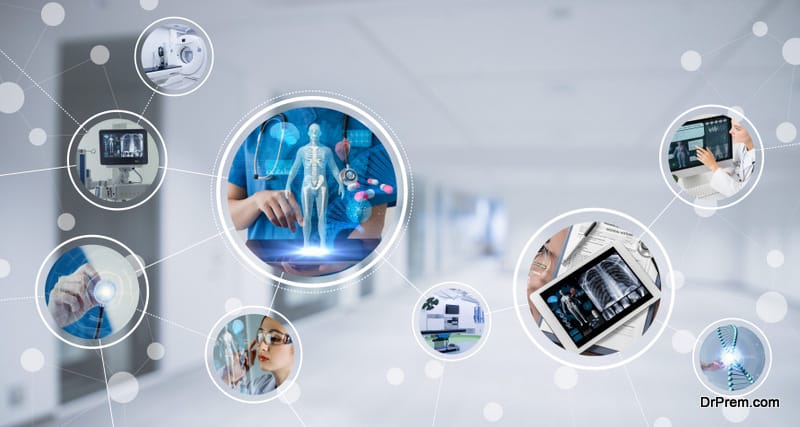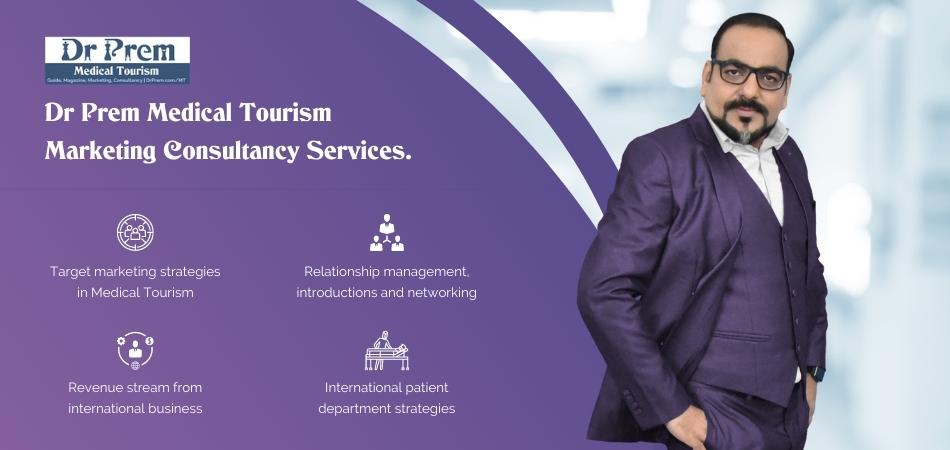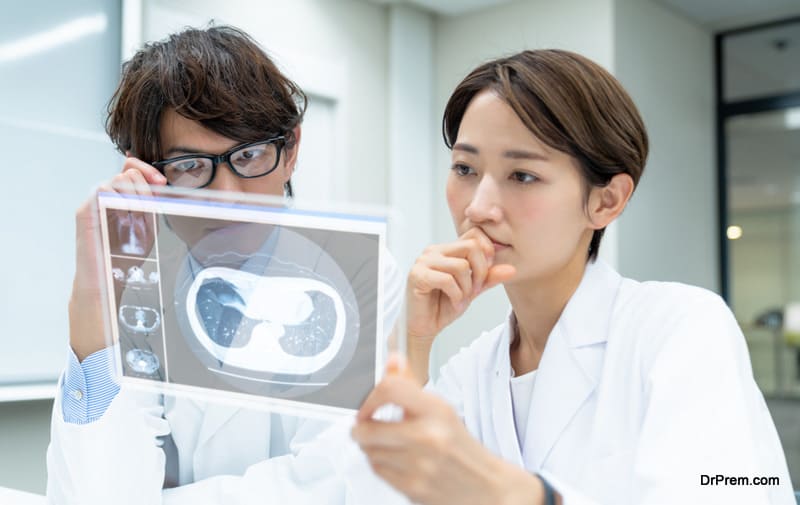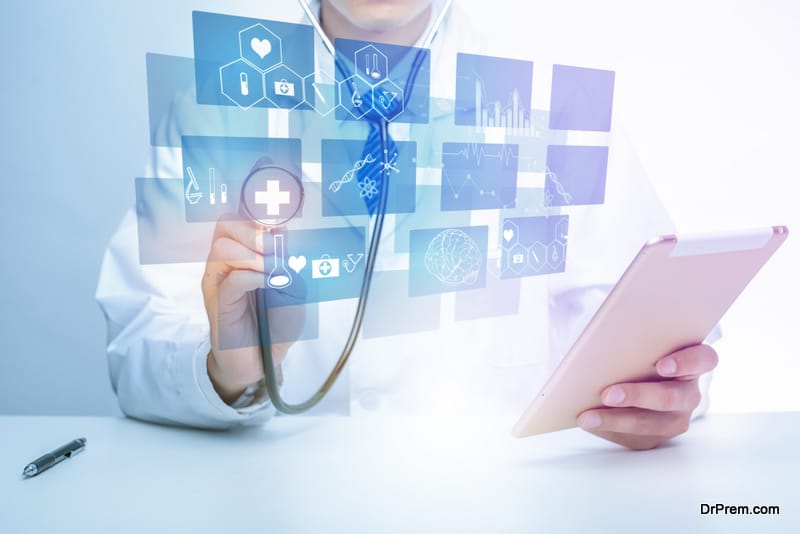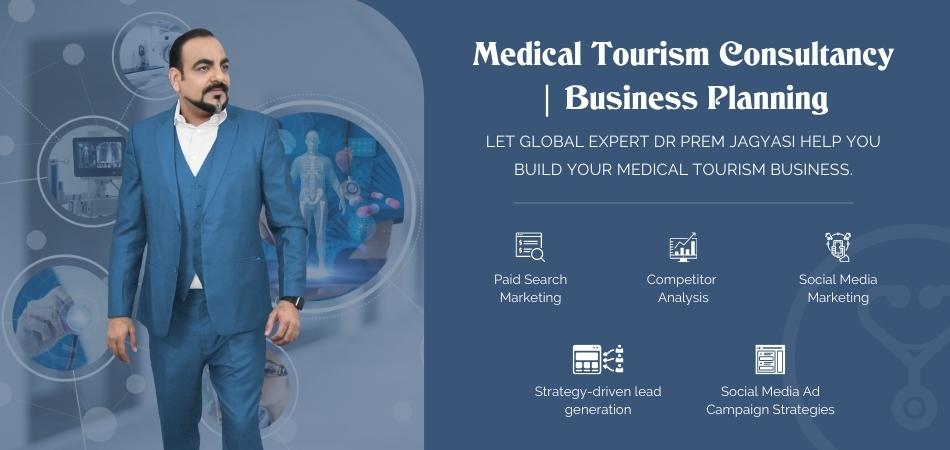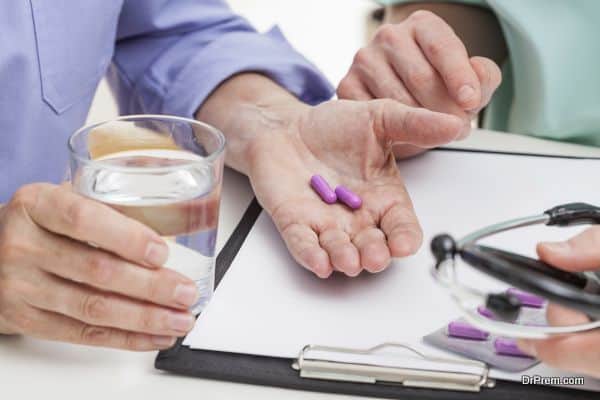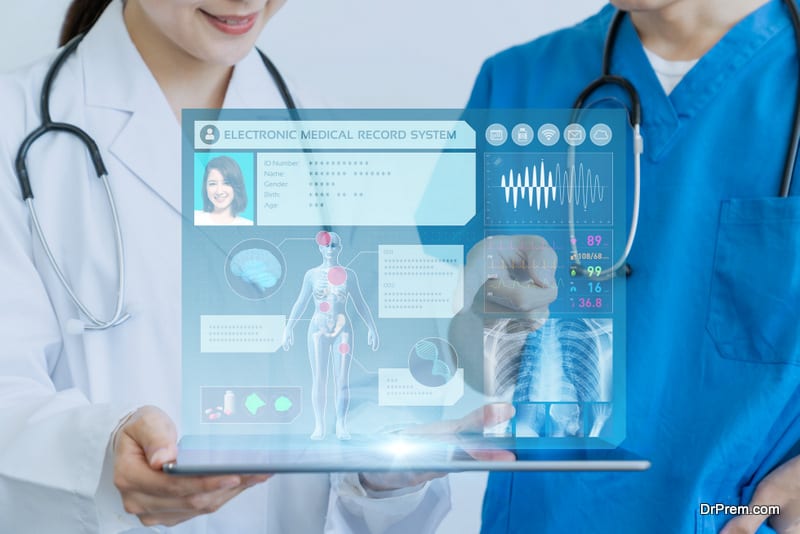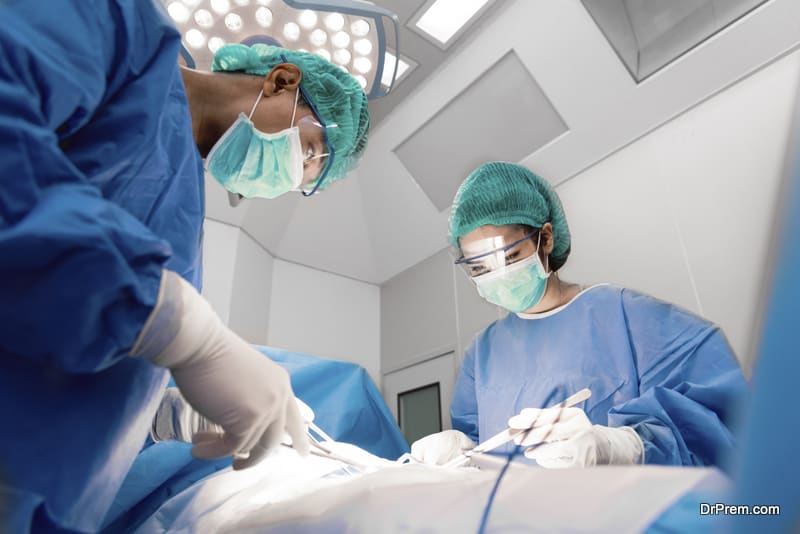IoT or the internet of things as a concept (or now something that is more real than reality) is super fascinating. Connecting everyday objects with the Internet and computing devices that can send and collect data in real-time is truly revolutionary.Health care and medicine have always been at the foreground in upcoming and emerging technology.
IoT in Global Healthcare and its challenges-An overview
-
Unique ways in which IoT or IoMT is going to influence the healthcare industry
-
Remote patient monitoring
-
Ingestible sensors that can be tracked
-
Advancement in wearable
-
Better assessments of health and diseases
-
High success rates of treatment
-
Reduced errors
-
Enhanced patient experience
-
Enhanced management of drugs
-
Electronic Medical Records improve Patient-Physician Interactions
-
Smart Beds Detect Patient Movements
-
It helps with asset monitoring
-
End-to-end connectivity
-
Mobile health and fitness
-
Reduction in the cost of healthcare
-
The takeover of robot surgeons
-
Patient empowerment
-
Two of the major concerns of implementing IoT in healthcare
-
Challenges faced by the IoT in the healthcare sector
The potential use of IoT in healthcare is more when compared to any other sector. The evolution of global healthcare is based on the technological that is accelerating every day. IoT, what it is famously called IoMT or the internet of medical things, can dramatically alter the landscape of healthcare.
It has the potential to empower customers and truly create person-centered care. From improving safety to reducing healthcare costs, from enabling better access to data to make personalized care a reality, the future is now. According to a research report by the grand view, the global healthcare sector is expected to invest approximately 410 billion dollars in IoT devices and software by 2022.
Although every new technology comes with its own share of benefits and potential negative aspects, we cannot ignore how it is going to change the face of healthcare in the coming years.
Unique ways in which IoT or IoMT is going to influence the healthcare industry
Remote patient monitoring
Through the advancement of IoT and the possibility of real-time data transfer, monitoring patients remotely is now a reality. Remote patient monitoring or what we call telehealth is basically tracking the health of the patient through sensors entered in the body which transmits data through the internet.
To take an example, Continuous Glucose Monitor is a device that can be inserted into the patient’s body, which then monitors the level of glucose in the blood, non-stop. The monitoring data can be easily accessed on android or ios devices. This real-time information can help with treating the patient in a more efficient way. A survey (reported in Qualitance) suggests that 70% of people want doctors to assist them remotely.
Ingestible sensors that can be tracked
According to a study conducted by the World Health organization, it was found out that around 50% of prescribed medicines are not taken the right way. Given the gravity of the situation and the importance of taking the medicine in a prescribed manner, tracked ingestible sensors come as a potential solution.
These sensors send a signal to the device upon the digestion/ dissolution of the pill. In this way, we can maintain an accurate record of the patient’s medicinal intake. It can ensure that the patient consumes medicines in the correct period of time.
Advancement in wearable
The availability of tracking devices such as smartwatches is stirring up the way people maintain their health. From your blood sugar level to monitoring the number of steps you have taken in the entire day. People are using this technology to make themselves fit. These watches remind you about the water intake and also help you monitor your blood pressure level.
They also collect data about the patient’s physical activity and can help the doctor with real-time information during emergencies. Companies like Fitbit are making this device available to the masses. People are getting into the habit of monitoring their calorie intake, their water intake, the amount of exercise that they are performing, etc. etc.
Better assessments of health and diseases
The advantages of IoT go far beyond the ability to collect and store data. With the help of IoT, it is now possible to not only collect large volumes of data but also to draw meaningful insights from them. This can help us with improving the process of diagnosing diseases at an early stage with a great level of accuracy.
When we apply artificial intelligence or machine learning to the patient’s data, we can identify the symptoms of life-threatening health conditions at a very early stage. To take an example, a patient who is not yet diagnosed with heart arrhythmia is more likely to suffer a stroke if the condition is not diagnosed during the early stages.
But the condition is difficult to diagnose and requires an electrocardiogram to detect the problem over the span of 24 hours. AI is more reliable and far more precise in predicting breast cancer in women. However, real-time, and continuous tracking of patient data coupled with machine learning can allow us to identify patterns that can help us diagnose the problem much more easily.
High success rates of treatment:
Connectivity of healthcare are solutions through cloud computing or other virtual modes enabling care providers to get an entry into real time inputs that help them to take informed decisions as well as provide services that has back up substantiation. This makes sure the medical services are delivered in time. The results of the treatment meet with success most of the times.
Reduced errors:
Precision of data gathered and automated workflows integrated with data based decisions are unique ways of reducing unproductive time mitigating system costs and downsizing mistakes.
Enhanced patient experience:
The connectivity of the healthcare system aided by the internet of things puts primary focus on the patients that is protective treatment and precise diagnosis, immediate involvement by physicians and success in treatments which leads to a growing care responsibility winning the reliability of the clinic among patients who become largely dependent upon the system.
Enhanced management of drugs:
Selection, study and handling and delivery of drugs are main expense areas in the healthcare industry. However, with IOT installed in the system, the costs become manageable.
Electronic Medical Records improve Patient-Physician Interactions
Electronic medical records can improve patient physician interactions considerably. These records make it easier for the transfer of patient centric information from one physician to another, thus reducing the need to transfer bulk amounts of paper work that may get lost in transit. Electronic medical records also make it easier for physicians to arrive at a diagnosis based on medical information the patient may otherwise forget to mention during the visit.
Smart Beds Detect Patient Movements
Many hospitals around the world have already started using smart beds to provide better healthcare for their patients. These beds come with sensors that can detect patient movements, including when a patient attempts to move or get up. They can also detect when the bed is empty or occupied, and can provide appropriate support for the patient with the click of a single button in the absence of a nurse nearby.
It helps with asset monitoring
With the help of IoT, we can monitor and control various essential equipments in the hospital. All these can be tagged, which will make it easier for the medical staff to locate them. A lot of equipment present at hospitals is life-saving; any glitch in the working of those equipments can cost a life. By connecting the devices through internet, hospital staff can monitor the status of the equipment very easily. Any defect in the working of equipment can be easily figured out.
End-to-end connectivity
This can make the delivery of healthcare services more productive. It facilitates machine-to-machine communication, interoperability, and information exchange. It can automate the workflow of patient care with the assistance of the healthcare mobility solution. This remote assessment of the patient can actually help with detecting the problem at an early stage. This can reduce the chances of a heart attack, stroke, seizure, etc.
Mobile health and fitness
In this era of technological revolution, you will hardly find a human without a mobile phone. People have also started using cellphones to remain fit and healthy. There are so many apps that offer so many different fitness solutions from tracking your pulse rate to your water intake. There are apps that help you with meditation, fitness programs and even plan the correct diet for you. People can send reminders and alerts for different fitness goals they want to achieve and work towards them in a very cost-effective manner. The possibilities are endless. You just have to click and the information is available at your fingertips.
Reduction in the cost of healthcare
Through IoT, we can witness a good amount of cost reduction in healthcare. It enables remote assessment of diseases and health conditions which makes the number of visits to the doctor’s office minimum. It can also detect early symptoms of certain health conditions thus preventing major expenses that can arise from the treatment of that particular condition.
The inefficiency in human management that mostly takes up the cost of healthcare can also be avoided through IoT. It enables doctors to make evidence-based informed decisions that can improve treatment and bring transparency to the entire process.
The takeover of robot surgeons
Robots controlled through the internet of things are as real as it can get. In a paper published in IEEE Xplore, the design and implementation of robot-assisted surgery based on IoT is discussed at length. It suggests how a robotic arm controlled via the internet of things by a nurse can be helpful for a surgeon in the surgery.
It can slowly turn into robots taking over the entire surgery given the imbalance in the demand and supply of skilled doctors. An article published in Forbes magazine talks about the possibility of remote surgery through 5G. This is possible by pairing an expert surgeon in one city with a robot in another.
Although the first documented robotic surgery dates back to 1985, in 2000, Da Vinci surgery system broke records when it received its FDA approval. Robotic surgery ensures a great deal of accuracy and can avoid mishaps or hazards that can be caused because of human negligence.
Patient empowerment
Through IoT, the patient is in a much more empowered position of his illness and treatment. Because of the easy availability of data of his/her condition and not just data but the insights of the collected data, the patient is much more informed about his condition. This transparency helps the patient in understanding what is going on and he doesn’t have to blindly rely on the doctor.
Given the advancement of technology and the way it is influencing how we practice healthcare, it is established that in the coming years IoT is going to be a mainstream phenomenon with more and more advanced technology. We, however, cannot neglect or ignore the threats and certain limitations that IoT possesses.
Two of the major concerns of implementing IoT in healthcare
- Firstly, the easy availability of a person’s data. The availability of data in such details can cause problems to the security of the person’s life. The data can very easily get into wrong hands and can be used for illegal practices. It puts the privacy of the person in major doubt. Security breaches are a major concern when a person’s whole life is tracked.
- Secondly, it raises the chances of manipulation of the data. Interconnectivity of devices can increase chances of data manipulation for various reasons. Be it to commit insurance fraud or to manipulate data for other malicious reasons. A person’s life is out in the open, and if proper security measures are not kept into practice it can cause serious consequences.
Challenges faced by the IoT in the healthcare sector.
- Underdeveloped initiatives. Many IoMT initiatives especially the ones designed to battle chronic diseases still need time to develop.
- The possible lack of memory to store this huge amount of information is another limitation faced by the sector with respect to IoT. There is a huge question of data repositories that need to hold innumerable data for an indefinite period of time.
- Another limitation is the timely update of software and hardware. The system is connected with multiple connections of software and hardware, which needs to be updated on a regular basis, as the technology is still in its evolving stage.
- The approval for IoMT or IoT is still required from many global healthcare sectors thus putting a cap on innovation and advancement.
Internet of Things is nothing short of a revolution for the global healthcare sector. The possibilities that this technology can unlock are beyond imagination. The interaction between artificial intelligence and IoT for the healthcare sector can help in producing more advanced technology and devices that can then perform various activities autonomously.
The use of drones to supply vital organs or blood in case of emergencies is just one such example. With how far we have come who knows where IoT will go next? We might soon witness the next-gen IoT devices which have even more intelligent services to offer. Even though this field still has its own peculiarities and limitations, it is important to emphasize the future of IoT in global healthcare looks promising.
